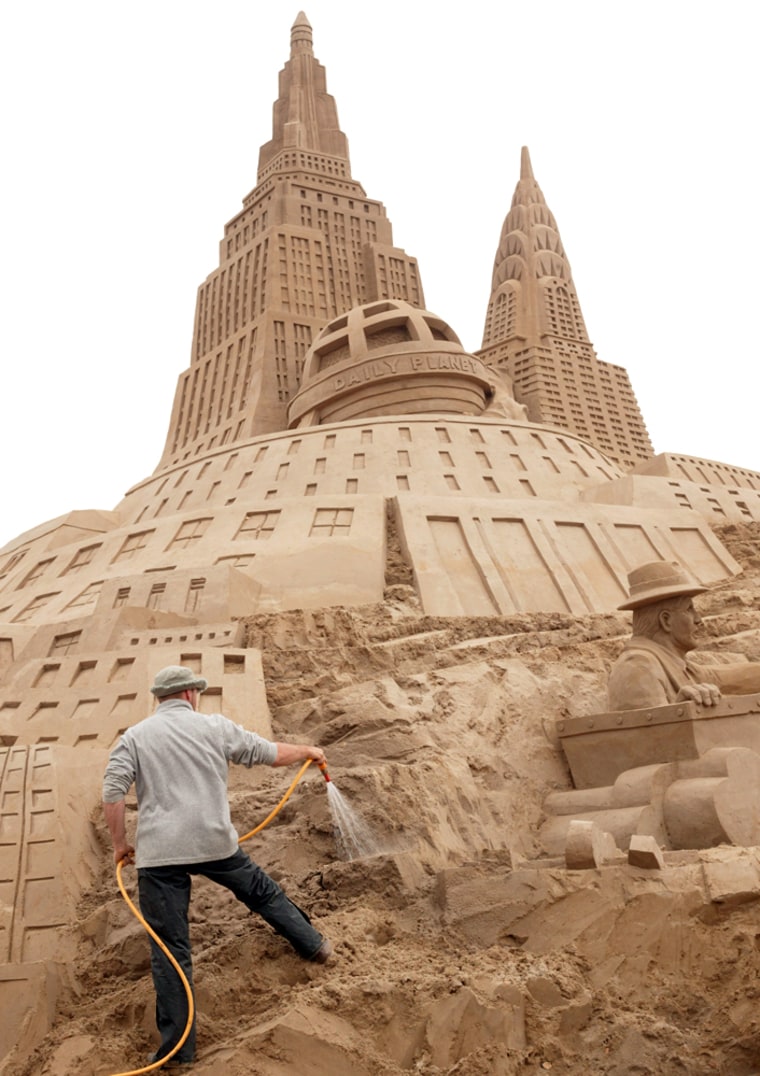Anyone who has built sandcastles learns they hold up best if a little water is mixed with the building material. But until now scientists couldn’t agree why.
Water holds grains of sand together by forming “liquid-bridges” between the contact points of the grains, a new study finds. The tension forces of the bridges creates an attractive force between the grains that is absent in dry sand.
Sarah Nowak of MIT and colleagues at Clark University put sand in a hollow rotating drum.
As the drum turned, the sand would build up in a pile until it reached the maximum angle of stability — the steepest slope a pile can achieve before it collapsed. When it collapsed, the researchers measured the slope of the pile post-collapse, called the angle of repose.
They found that the addition of even miniscule amounts of water greatly increased the sand grains’ ability to stick to one another, which allowed the pile to stay together at steeper angles and collapse less drastically than when the sand was dry.
And some of the bridges stayed intact after the collapse. You can see this on the beach when a sandcastle falls apart in clumps held together by moisture instead of rolling sheets of dry sand.
The results are detailed in the October issue of the journal Nature Physics.
Sand interests physicists because it, or any collection of macroscopic solid grains, exhibits both liquid and solid characteristics.
“For example, dry sand in a bucket can be poured like a fluid, but it can also support the weight of a rock placed on top — even if the rock is denser than the sand,” Peter Schiffer of Pennsylvania State University wrote in an accompanying analysis in the journal.
Understanding the interactions between dry grains and liquids is vital not just for building sandcastles, but for industries ranging from mining to pharmaceutical development.
For sandcastle builders, the best mix, it turns out, is one pail of water for every eight pails of sand.
